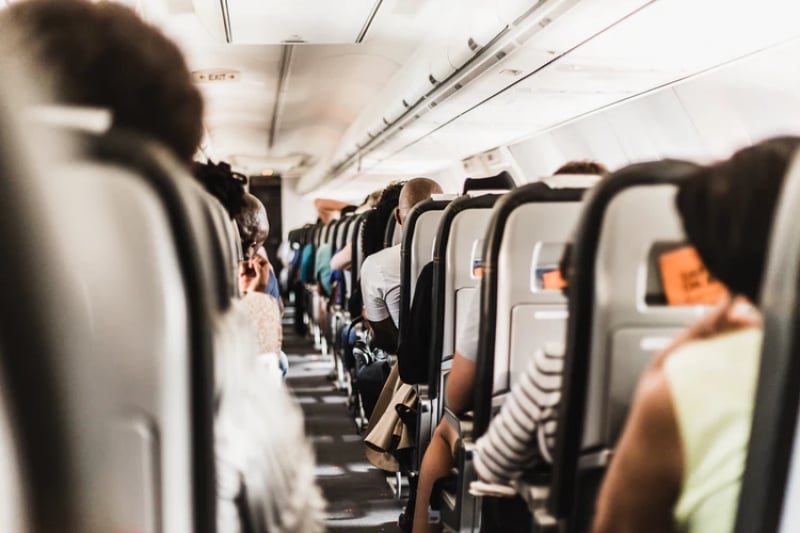Well, Al Gore warned us and Greta Thunberg told us. (Not to mention the hundreds of climate scientists that have been basically yelling at us for years now.)
The environment is really — and I mean really — in trouble.
According to the United Nations, we only have 11 years to prevent irreversible damage from climate change. Cities like Jakarta, Bangkok, and the Philippines’ Manila and Davao, have been listed as the earliest victims of rising sea levels. These destinations are frighteningly predicted to be underwater by 2030.
We’re inching towards steps, but major changes are still ahead of us. We still live in a world that’s filled with an overdependence on plastic, climate change deniers, and apathetic people. Not to mention, consumers are being pressured to execute environmental change rather than holding the twenty corporations behind a third of all carbon emissions on earth accountable for their actions.
The travel industry, on the other hand, accounts for 8% of global carbon emissions with a 4% growth per annum. On top of the global crisis at hand, there’s also a travel rate increase to certain places that are deemed “last chance destinations”, which pertains to the places currently under threat of being erased due to environmental changes. Rather than engaging in a race to catch famed attractions before they’re gone, why not make an effort to let them last much longer?
Some pillars of tourism have already adapted environmental programs, but there’s still much more that we can do. Take a look at the actions we can take to reduce our carbon footprint while travelling!
1. Walk, don’t drive
If you can walk, walk. Not only are you fulfilling your health goals, but you’re also saving money, cutting down on the gas, and getting a cool street-level view of the destination. If you’re up to it, you can also pick up any trash along the way.
Also read: 12 Habits We Can Quit For More Eco-friendly Travels
2. Keep yourself grounded— literally

Since the advent of air travel, land transport has been slowly losing popularity because it consumes too much time. But because of the high amount of carbon emissions produced by planes (especially short-distance flights), we’re slowly inching back to travelling on land. Learn from the example of Greta Thunberg who shows that reducing carbon footprint is effectively practised by taking mass transports like trains, buses, even boats! (We won’t include cruises. That’s a whole different story!)
If you’re keen on using a car, try to carpool to provide a single ride for several people or use an electric car. Taking in the scenery of the road is still an adventure, especially when passing through the countryside. The view of nature adds a refreshing element to your trip!
3. Book flights that are eco-friendlier (slightly)

Of course, not everyone can forego flying, so thankfully there are a few ways to offset your carbon footprint when you’re up in the air. At the base level, you can always opt for non-stop flights, rather than direct flights, because planes emit the most during takeoff and landing.
Note: By definition, non-stop flights are flights that take you from one destination to another without stops at any other city. On the other hand, direct flights land at certain points to refuel and let more passengers on without current passengers leaving the plane (yes, these types of flights exist).
Another measure is to willingly fly economy. It’s been proven that First Class and Business Class flyers have a higher carbon footprint because of the space that they take up. Lastly, we can always exercise due diligence by researching whether or not our airlines have implemented carbon offset programs and environmental practices like Cebu Pacific’s Juan Effect program.
4. Get used to packing light

The next time you go toe-to-toe with the check-in counter scale, remember that they’re not the enemy. Packing heavy is. It’s always better to go under the maximum weight since heavier pieces of luggage mean a heavier plane, resulting in more carbon emissions. So keep this in mind the next time you pack for a vacation. Maybe try to adapt a capsule wardrobe for the trip too!
5. Learn to make do
Travelling isn’t an excuse to live in excess. The next time you’re staying at a hotel, learn to pack your bathroom liquids in reusable and refillable bottles. Those mini-shampoos and conditioners in hotels won’t do the environment (and your hair, frankly) any good. But if you insist on using these complimentary hotel items, you can always bring them home to reuse or upcycle for other purposes.
You can also keep your sheets clean and tidy so you can turn down housekeeping and reduce the need for laundry. Some hotels even have environmental reminders on the bathroom door. They ask you to think carefully before you request for your towels to be replaced every day. Kudos to eco-conscious accommodations!
6. Bring reusable water bottles

It’s always super convenient to bring your own water bottle everywhere you go. Not only are you doing the environment a favour (plastic bottles take 450 years to decompose!), you’re also saving a ton of money. If you’re concerned about water safety, you can always bring a water filter. That way, you can always have clean water with you. And while you’re at it, bring an extra tote bag for when you shop!
7. Eat local

Help yourself to local cuisine when travelling! It’s fresh, cheap, and gives the local economy a big boost, creating demand and local jobs from the ground up. It’s a great way to encourage tourists to explore beyond their comfort zones and immerse in the destination’s culture. What’s more, eating local will greatly reduce everyone’s carbon footprint since it lessens the need to import ingredients!
P.S. Night markets totally fall under this!
Also read: Travelling Green: 10 Eco-friendly Activities For Your Itinerary
There are plenty more ways to reduce carbon footprint! Some ways may not be as obvious, such as staying away from seemingly innocent animal attractions. People still make a cold business out of animals, which are imported through various transportation modes just so tourists can pet them. The human cruelty is only doubled, by the simultaneous damages to the environment, through the carbon emissions of the transports that these animals board. Every selfish act creates a ripple, so let’s do our part to make the world better!




